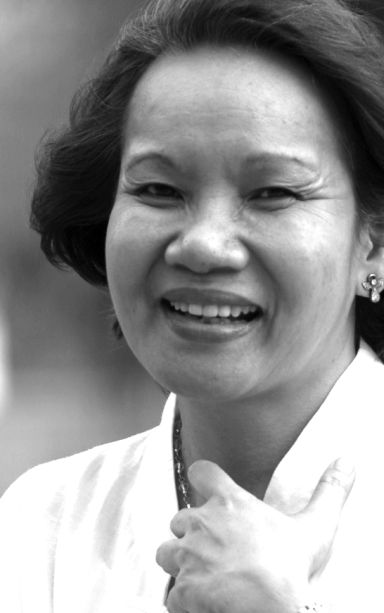
LOGARTA
Jesse Robredo would have had a very big smile; certificates of good governance would have been given out. Ahmed Cuizon himself checked up terminals and even assisted drivers as they posted stickers. The governor himself also checked departure areas. Peace officers were in readiness.
Everything was being done for not only the safety but also for the successful happy celebration of our remembrance of our beloved dead.
Many did everything so they could be home for those who had gone home to the Father ahead of them. Everything was done for this: all efforts to take that long trip, no money was spared for the flowers, candles, food, Masses and other offerings.
Conventional media played its role. Karen Davila’s interaction with psychologist Sofia Lina on death and grief was very informative. How do we deal with someone grieving who does not believe in the afterlife? Recall beautiful memories of the person who passed away. One needs to express the sadness, let the sorrow out for we do harm to ourselves by keeping it in.
There were attempts to explain practices which have been handed down for generations. Many tried to throw light on the “palina,” the practice of exposing oneself to smoke after being with the mortal remains especially in the cemetery. The most reasonable was provided by Sr. Catalina Varela, ICM, who asked her students to do some fact finding on this. They found out that long ago when they had problems with communicable diseases, the “palina” was a mini-fumigation, a way by which the mourner is rid of the germs and other harmful matter and does not bring them along.
Church people did their part in clarifying things and removing fears. So much so that several commented that they did not fear the dead, rather they feared the living more!
Getting involved in our annual remembrance of our ancestors who have passed on is good for our young people for there is a lot to learn in these experiences. For one thing, they will become familiar with the family tree. As a child, I was assigned to take charge of the tomb of my great-grandmother I had been name after, the same way Mama took care of Lola Bebang’ grave. Looking at the graves, our young descendants will find out the three Flores (flowers) women married three Miel (honey) men. By the time of the third female, she was referred to as “ours” even before the actual marriage.
Then they will get to know about Filipinos and what is precious for them. They will observe and feel the intense affection within families among the living and the tombstone inscriptions. Some young people who have only recently discovered independence and their individuality may find this suffocating. This is a time to rediscover that there is something comforting here.
Being a part of the activities will make them understand the culture concept. It will make them realize that there are parts of their personality that have been shaped by their having been a part of Philippine society. There are behaviors that they have been doing mechanically without genuine commitment and without knowing where they got them.
All Saints’ Day and All Souls’ Day is also a good time to pause and reflect on our beliefs: our being more than material, life after death, the promise of the Resurrection.
Why are we so intense about the commemoration of our ancestors? Our Asian past provided us with a sensitivity for the spirit world. It gave us a strong attachment to our ancestors. On the other hand, Western colonization did not negate this; it further emphasized that.

